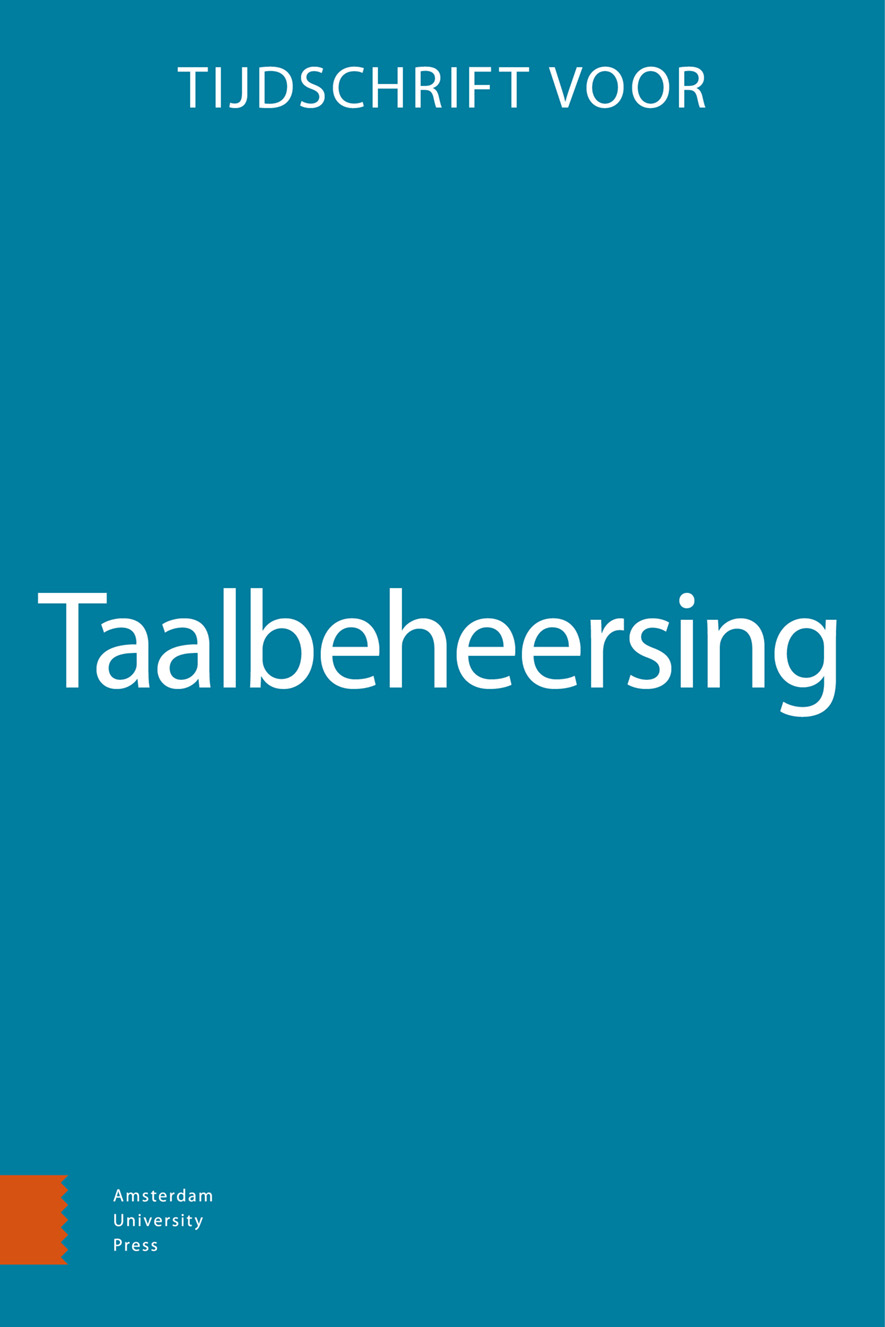- Home
- A-Z Publications
- Tijdschrift voor Taalbeheersing
- Previous Issues
- Volume 38, Issue 3, 2016
Tijdschrift voor Taalbeheersing - Volume 38, Issue 3, 2016
Volume 38, Issue 3, 2016
Language:
English
-
-
De potentiële impact van informele online communicatie op de spellingpraktijk van Vlaamse tieners in schoolcontext
More LessAuthors: Reinhild Vandekerckhove & Dominiek SandraAbstract The potential impact of informal computer-mediated communication on the spelling performance of Flemish adolescents in school contexts In recent decades, all kinds of media have been echoing the concerns of parents and teachers who fear that online chat practices corrupt the writing and especially the spelling skills of youngsters. The main objective of the present study was to assess the potential impact of Read More
-
-
-
Argumentatie-analytische begrippen in het centraal examen Nederlands
More LessAuthors: Peter Jan Schellens & Uriël SchuursAbstract Argumentative vocabulary in Dutch national examinations of reading proficiency. Recent revisions For years, in Dutch general secondary education (havo and vwo) argumentation skills are part of the national examinations in reading proficiency. Recently, the Dutch Board of Examinations (College voor Toetsen en Examens – CvTE) asked an advisory committee to evaluate the argumentative vocabulary used i Read More
-
-
-
Tekstgenres analyseren op lexicale complexiteit met T‑Scan
More LessAuthors: Henk Pander Maat & Nick DekkerAbstract Using T-Scan to analyse the lexical complexity of text genres T-Scan is a tool for the automatic analysis of Dutch text. This paper presents the first large-scale corpus analysis with T-Scan, focusing on lexical complexity. A collection of nearly 1000 text specimens was assembled, containing ten genres: travel blogs, celebrity news features, novels, textbooks for vocational secondary schools, textbooks for general s Read More
-
-
-
Schrijvers in spe?
More LessAuthors: Anne van Bochove & Anne VermeerAbstract Stylistic elements in children’s writings from grades 3 to 6 In this article, the use of stylistic elements in children’s writings is investigated, and how this use develops in the course of elementary school. We looked at stories written by 200 children from grades 3 to 6 (ages 9 to 12) of elementary school. We focused on two categories of stylistic elements: at the level of the organization of the story (e.g., the use of narr Read More
-
Volumes & issues
Most Read This Month
Article
content/journals/15739775
Journal
10
5
false
en

Most Cited Most Cited RSS feed
-
-
Fatale spelfouten?
Authors: Frank Jansen & Daniël Janssen
-
- More Less

